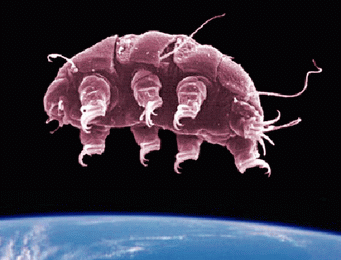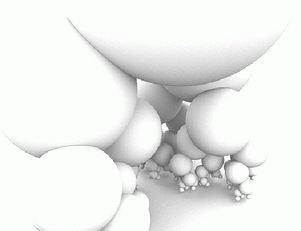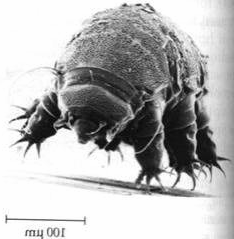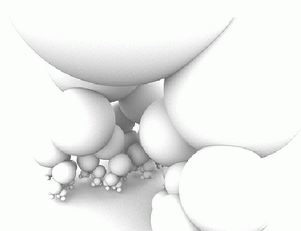

water bears:
the animal that

survived space!

Meet a hardy little organism called the water bear.
Water bears, also known as tardigrades, are a wonder! They are tiny eight-legged creatures, known for their virtual indestructibility on Earth. They can survive almost anything: extreme temperatures, tons of radiation, the pressures of the deep sea, starvation, and nearly a decade without water. Now their legendary toughness has been put to the ultimate test. They've been sent into space!
In the past, some biologists have suggested that tardigrades may be the only animal to come back alive after a trip in real space. Scientists now decided to send them into space to find out if that is true.
Once in space, all the water bears were exposed to the vacuum of space, and some were even exposed to solar and cosmic radiation. After 10 days of exposure to space, the satellite returned to Earth. The water bears were rehydrated to see how their reproductive abilities were affec ted.
The vacuum itself seemed to have little effect on the creatures. But ultraviolet radiation , which can damage cellular material and DNA, did take its toll. Yet, a handful of animals even survived full exposure to the Sun's UV light, which is more than 1000 times stronger in space than on the Earth's surface.


Water bears are a mystery. They have an unparalleled ability to cope with the extremely dry conditions of deep vacuum and the harmful solar and cosmic radiation up there, which has piqued scientific curiosity. Still, no one quite understands how they can be as resistant as they are. Besides, they are also challenging our traditional concepts of life, for instance that life depends on water, or that life is a continuous process.
Tardigrade QUIZ

I. Are water bears bacteria or animals?
They have claws and eyes. They are real animals.
They are bacteria.
Neither, they are the largest known viruses.
II. How big are they?
Tardigrades are about the size of a fly.
Bigger adults are visible to the naked eye, reaching about 1,5 mm in length.
They can only be seen under a microscope.
III. How many legs do they have?
Tardigrades are six-legged.
Tardigrades are seven-legged.
Tardigrades are eight-legged.
IV. Where do they live?
They are found throughout much of Asia and Africa.
Tardigrades occur over the entire world, from the high Himalayas (above 6,000 m), to the deep sea (below 4,000 m) and from the polar regions to the equator.
They can only be found inside active volcanos in Peru.
V. How did they get their name?
The name water bear comes from the way they walk, reminiscent (=reminding) of a bear's.
The name is a reminder of their distant genetic relationship with bears.
The name reflects their ability to go into hibernation to survive extremes.
VI. How hot is too hot for them?
They can survive temperatures between -50 and 90 °C for a few minutes.
They can survive temperatures between -150 and 125 °C for a few minutes.
They can survive being chilled to -272 °C (absolute zero is −273.15 °C), or being heated to 151 °C for a few minutes.
VII. How long can they go without water?
Tardigrades can go without water for nearly one year.
Tardigrades have been shown to survive nearly one decade in a dry state.
Tardigrades can survive nearly one hundred years in a dry state.
VIII. How much radiation can they survive?
They can withstand (=survive) 17,000 rads of x-ray radiation. (1,000-2,000 rads could be fatal to a human).
They can withstand 57,000 rads of x-ray radiation.
They can withstand 570,000 rads of x-ray radiation.
IX. How do they survive extreme conditions?
They're capable of halting (=stopping) their metabolisms (=life functions) during times of extreme privation (=a lack of basic things), and can repair DNA damage caused by extraordinary doses of radiation.
They are supposed to be alien organisms that landed on Earth with an incoming meteor. Their native planet must have been much closer to the Sun, making them evolve resistance toward extreme heat and radiation.
They survive extremes by having a tremendously resilient (=resistant) shield that reflects heat and radiation.
Source URLs:
Tardigrade QUIZ
solutions
I. Are water bears bacteria or animals?
A. They have claws and eyes. They are real animals.
II. How big are they?
B. Bigger adults are visible to the naked eye, reaching about 1,5 mm in length.
III. How many legs do they have?
C. Tardigrades are eight-legged.
IV. Where do they live?
B. Tardigrades occur over the entire world, from the high Himalayas (above 6,000 m), to the deep sea (below 4,000 m) and from the polar regions to the equator.
V. How did they get their name?
A. The name water bear comes from the way they walk, reminiscent of a bear's.
VI. How hot is too hot for them?
C. Tardigrades can survive being chilled to -272 °C. (absolute zero is −273.15 °C), or being heated to 151 °C for a few minutes.
VII. How long can they go without water?
B. Tardigrades have been shown to survive nearly one decade in a dry state.
VIII. How much radiation can they survive?
C. They can withstand 570,000 rads of x-ray radiation. (1,000-2,000 rads could be fatal to a human).
IX. How do they survive extreme conditions?
A. They're capable of halting their metabolisms during times of extreme privation, and can repair DNA damage caused by extraordinary doses of radiation.
Source URLs:
comprehension questions
article & quiz
Why did scientists send water bears into space?
……………………………………………………………………………………………………………………
What was more difficult for water bears to survive: vacuum or cosmic radiation?
……………………………………………………………………………………………………………………
How does the existence of water bears inform our understanding of what “life” is?
……………………………………………………………………………………………………………………
How long can water bears go without water?
……………………………………………………………………………………………………………………
How did tardigrades get their names?
……………………………………………………………………………………………………………………
Are tardigrades real animals?
……………………………………………………………………………………………………………………
What do scientists understand about how these creatures can survive such extremes that no other animal can?
……………………………………………………………………………………………………………………
Vocabulary practice
a force of pushing ………………………………………………
a lot of UV waves ………………………………………………
ability to create children ………………………………………………
being faced with certain conditions ………………………………………………
decade ………………………………………………
do harm to sg ………………………………………………
having a second name ………………………………………………
having eight legs ………………………………………………
having no rivals ………………………………………………
having nothing to eat ………………………………………………
idea ………………………………………………
impossibility to destroy ………………………………………………
the best or the biggest ………………………………………………
to be influenced by sg ………………………………………………
to be soaked in water ………………………………………………
to excite scientists' interest ………………………………………………
to face certain conditions ………………………………………………
to find the answer ………………………………………………
to question that sg is true ………………………………………………
to survive ………………………………………………
to tackle sg ………………………………………………
to test ………………………………………………
tough (2.) ………………………………………………
tough ………………………………………………
very famous ………………………………………………
Solutions
Task 1. Label the paragraphs with their topic.
Who Are Tardigrades
Objective of Experiment
The Experiment
Results from Experiment
Significance of water bears
Task 2. Find synonyms in the text for the phrases.
Vocabulary
a force of pushing: pressure
a lot of UV waves: tons of radiation
ability to create children: reproductive abilities
being faced with certain conditions: exposure to
decade: 10 years
do harm to sg: take its toll
having a second name: also know n as
having eight legs: eight=legged
having no rivals: unparalelled
having nothing to eat: starvation
idea: concept
impossibility to destroy: indestructibility
the best or the biggest: ultimate
to be influenced by sg: be affected
to be soaked in water: rehydrate
to excite scientists' interest: piqued scientific curiosity
to face certain conditions: be exposed to
to find the answer: find out if …
to question that sg is true: challenge
to survive: come back alive
to tackle sg: cope with
to test: put to the test
tough: hardy
tough (2.): resistant
very famous: legendary
Task 1. Label the paragraphs with their topic.
Significance of water bears
The Experiment
Objective of Experiment
Who Are Tardigrades
Results of Experiment
Task 2. Find synonyms in the text for the phrases.
the force of pushing
a lot of UV waves
ability to create children
being faced with certain conditions
do harm to sg
to excite scientists' interest
having a second name
having eight legs
having no rivals
idea
impossibility to destroy
having nothing to eat
ten years
the best or the biggest
to question that sg is true
to be influenced by sg
to be soaked in water
to face certain conditions
to find the answer
to survive
to tackle sg
to test
tough
tough (2.)
very famous
Wyszukiwarka
Podobne podstrony:
Your Bones in Space
ODR in Space Odyssey
Appleton, Victor II Tom Swift Jr 006 Tom Swift and His Outpost in Space Jim Lawrence UC
Incident in Space Lawrence E Larkey
Dr Who Target 130 Wheel in Space # Terrance Dicks
Cantata 140 (shorter version of The Crack In Space)
A Hole in Space Larry Niven
Sabotage in Space Carey Rockwell(1)
Robert A Heinlein A tenderfoot in space (original version)
004 Doctor Who and the Ark in Space
George Griffith A Honeymoon in Space
Super Red Bird from Angry Bird in Space
Crack In Space, The
Heinlein, Robert A Ordeal in Space
LIVING IN SPACE
Place in Space
army men toys in space
130 Doctor Who The Wheel in Space
więcej podobnych podstron